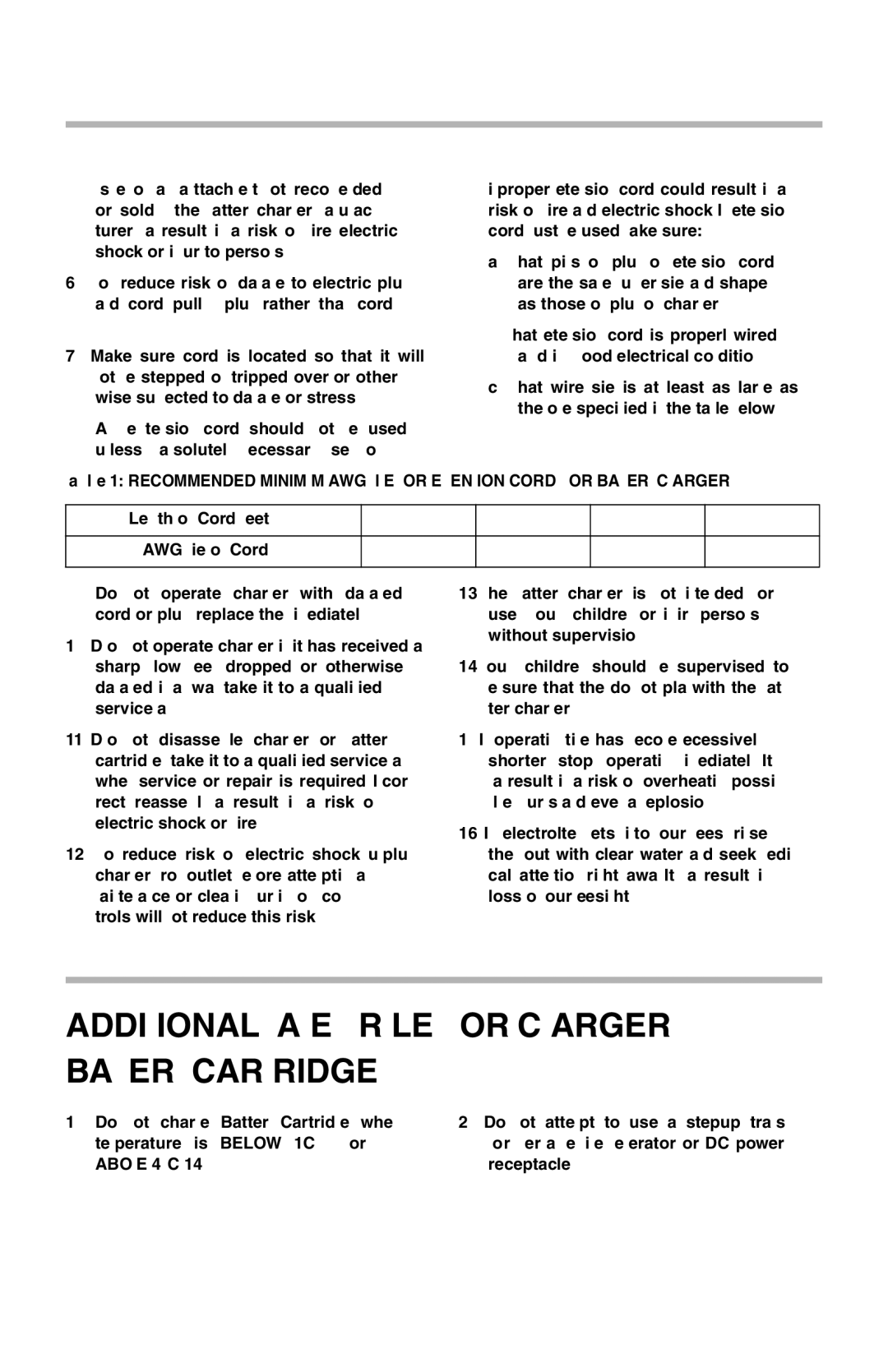
5.Use of an attachment not recommended or sold by the battery charger manufac- turer may result in a risk of fire, electric shock, or injury to persons.
6.To reduce risk of damage to electric plug and cord, pull by plug rather than cord when disconnecting charger.
7.Make sure cord is located so that it will not be stepped on, tripped over, or other- wise subjected to damage or stress.
8.An extension cord should not be used unless absolutely necessary. Use of
improper extension cord could result in a risk of fire and electric shock. If extension cord must be used, make sure:
a.That pins on plug of extension cord are the same number, size, and shape as those of plug on charger;
b.That extension cord is properly wired and in good electrical condition;
c.That wire size is at least as large as the one specified in the table below.
Table 1: RECOMMENDED MINIMUM AWG SIZE FOR EXTENSION CORDS FOR BATTERY CHARGERS
Length of Cord (Feet) | 25 | 50 | 100 | 150 |
|
|
|
|
|
AWG Size of Cord | 18 | 18 | 18 | 16 |
|
|
|
|
|
9.Do not operate charger with damaged cord or plug - replace them immediately.
10.Do not operate charger if it has received a sharp blow, been dropped, or otherwise damaged in any way; take it to a qualified serviceman.
11.Do not disassemble charger or battery cartridge; take it to a qualified serviceman when service or repair is required, Incor- rect reassembly may result in a risk of electric shock or fire.
12.To reduce risk of electric shock, unplug charger from outlet before attempting any maintenance or cleaning. Turning off con- trols will not reduce this risk.
13.The battery charger is not intended for use by young children or infirm persons without supervision.
14.Young children should be supervised to ensure that they do not play with the bat- tery charger.
15.If operating time has become excessively shorter, stop operating immediately. It may result in a risk of overheating, possi- ble burns and even an explosion.
16.If electrolyte gets into your eyes, rinse them out with clear water and seek medi- cal attention right away. It may result in loss of your eyesight.
ADDITIONAL SAFETY RULES FOR CHARGER & BATTERY CARTRIDGE
1. Do not charge Battery Cartridge when | 2. Do not attempt to use a |
temperature is BELOW 10°C (50°F) or | former, an engine generator or DC power |
ABOVE 40°C (104°F). | receptacle. |
6
